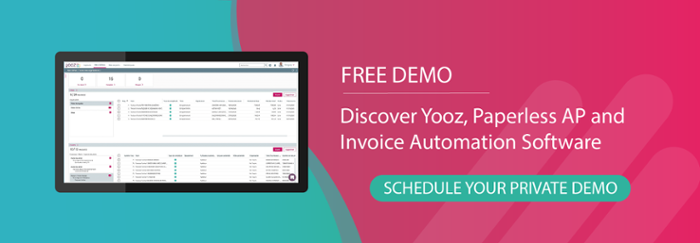Before Automated Invoice Processing spread into the organizations, the cost of processing an invoice varied wildly. This is because time spent on manual invoice processing depends on several factors, such as clerical accuracy (or lack thereof) and the speed at which an accountant can manually enter data or cross-reference documents. As human error often creeps in, and paper-based systems are less efficient than their digital counterparts, costs can soar all-too quickly, leaving bills unpaid and vendors displeased.
However, besides reducing the cost of processing an invoice, there are other crucial differences between manual Accounts Payable and Accounts Payable automation.
How manual and automated AP invoice processing differ
Not long ago, all invoice processing was done manually. As time is always of the essence when it comes to honouring payments, accountants are under pressure to push invoices through as quickly and accurately as possible. But we’re also human so ensuring payments, following-up with approval processes, filling documents, doing data checks, making sure to include all relevant departments or people, and following up with vendors can pile up and lead to delays or even worse, inaccurate data and invoices. Implementing NetSuite invoice automation can streamline these processes, reducing the risk of errors and ensuring that payments are made on time.
Because of this, the cost of processing an invoice is seen as something of a time-sink and one that leads to high overhead costs.
Thankfully, AP automation technology is transforming the invoicing process and making accountants’ lives easier. In fact, digitalizing client and supplier documents can lead to savings of 50 to 75% when compared to paper processing, with the added benefit of reducing processing time by approximately 30%. Additionally, whereas a paper invoice costs 9 euros on average, a digitized invoice only costs between 3 and 6 euros. That represents a notable reduction in the cost of processing an invoice.
This article by SmallBizDaily goes few steps further by highlighting some other noteworthy benefits that automation brings to the table:
- Less paper: As automated Accounts Payable happens primarily online or via cloud-based solutions, departmental paper waste and unnecessary costs (such as printer ink) are drastically lowered. As we enter the digital-first era and sustainability is becoming more of a key industry driver, and AP automation can help businesses become more eco-friendly.
- Increased productivity: By removing redundant, time-consuming administrative tasks from daily duties, AP automation empowers teams with the time they need to focus on jobs that add real value to the business.
- Data recall: With manual Accounts Payable, it’s up to employees to remember the specific, important information contained in an invoice. AP automation systems remove the reliance on memory by providing aggregated data that can be accessed quickly and easily. This accuracy goes a long towards lowering the cost of processing an invoice.
- Ease of integration: When researching AP automation service providers, it’s critical to ensure that the new technology can integrate with either your existing accounting and tax platforms or any other platform that plays a role in the invoicing process. By doing due diligence before pulling the trigger on an automation product, you avoid costly onboarding delays and having to reconfigure legacy systems.
Digitalization offers the benefit of positive impact across the entire invoice processing cycle:
- Mail management becomes easier (and faster). Do you know how many documents handled by companies are lost every year? About 7%, according to a study by Kodak Alaris.
- It is no longer necessary to re-enter accounting information or run the risk of cascading errors and future disputes.
- Validating documents is faster with streamlined workflows, adapted portals, electronic signatures, and secure access.
- Pay cycles are shorter (to the great satisfaction of both suppliers and liquidity managers).
- Dispute handling is less of a headache for the people in charge, especially since most dysfunctions can be avoided earlier in the process when entering information.
- Storing large volumes of paper is no longer an issue: just multiply the size of the required storage cabinets by the average price per square foot and you might find a cost of several thousand pounds, or even tens of thousands of pounds for the biggest companies. According to the Kodak Alaris study, the average maintenance cost for an archive cabinet filled with papers can reach a total cost of 2,500 £ per year. Assuming, of course, that the archived documents are classified correctly!
Choosing the right service provider for your needs
Just like with anything, to maximize the benefits of automation software your business requires more than just the product or service. For ongoing cost-savings and processing efficiency, you need knowledge. Choose an experienced partner who can deliver an exceptional cloud-based product, as well as customer service that exceeds expectations 24/7.
Yooz is that AP automation company. We deliver the highest automation rates by industry standards, coupled with unrivalled simplicity, to help accounting and finance leaders increase productivity and solve security challenges from purchase to payment.
Manual processes count for over 30% of AP costs and seriously put your company at risk! In this webinar replay, find out about the next generation of AP automation that makes high-performance technology accessible for all.

.jpg)






